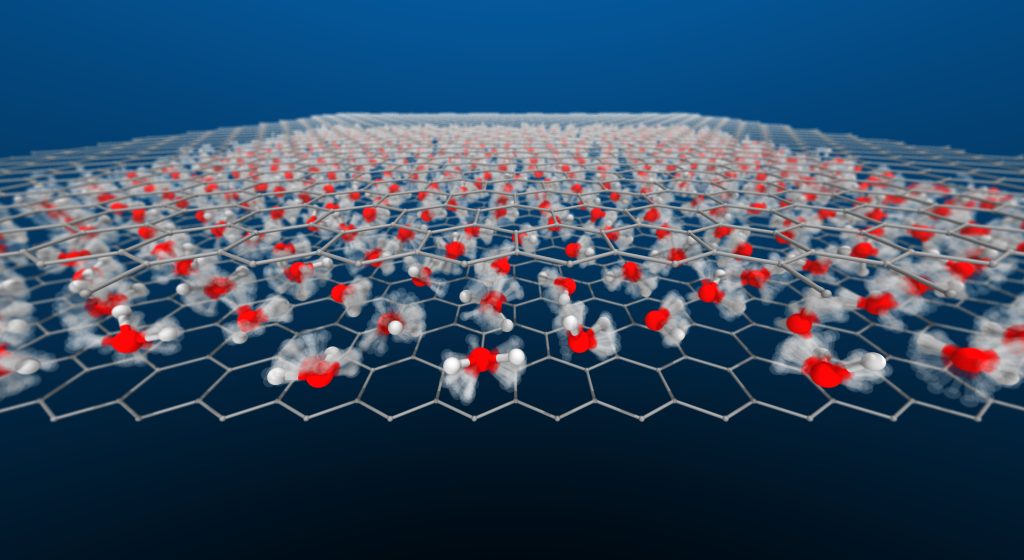Confinement induced new phases of water

Water trapped between membranes or in tiny ‘nanoscale’ cavities is very common – it can be found in everything from membranes in our bodies to geological formations. But this nanoconfined water behaves very differently from the water we drink.
Until now, the challenges of experimentally characterising the phases of water on the nanoscale have prevented a full understanding of its behaviour. But in recent work published in Nature, we have used advances in computational approaches to predict the phase diagram of a single (one-molecule thick) layer of water with unprecedented accuracy.
We combined a range of computational approaches to enable the first-principles level investigation of a single layer of water. We found that the one-molecule thick layer of water within the nanochannel exhibited surprisingly rich and diverse phase behaviour. Our approach predicts several phases which include a hexatic phase–an intermediate between a solid and a liquid–and also a superionic phase, in which the water has a high electrical conductivity.
These results will not only help with understanding how water works at the nanoscale, but also suggest that ‘nanoconfinement’ could be a new route into finding superionic behaviour of other materials.
Authors: Venkat Kapil, Christoph Schran, Andrea Zen, Ji Chen, Chris J. Pickard, Angelos Michaelides
